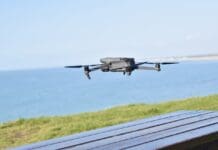This post is also available in:
 עברית (Hebrew)
עברית (Hebrew)
The US Air Force has been running a program named FORTRESS, Focused Opportunity Reaching Toward Reliable Electro-Optic Strategic Sensors, designed for developing, growing and fabricating large-format HgCdTe (mercury cadmium telluride) infrared focal plane array detectors with ultra-low noise and high quantum efficiency. These devices will be able to survive bombardment by space radiation, as well as laser attacks.
The FORTRESS effort focuses on advancing and maintaining scientific knowledge, growth, processing, and characterization capability in low-noise infrared sensor chip assemblies (SCAs) for national strategic space applications, such as electro-optical surveillance satellites.
Recently, the Air Force signed a $16.4 million contract modification with Teledyne Scientific for this purpose. The contract modification calls for the company to pursue these HgCdTe detector technologies in parallel with conventional HgCdTe and III-V based unipolar barrier infrared detectors, but grown on larger substrates.
The company’s work on the FORTRESS program involves development for military space applications, focusing on the design, growth, and fabrication of HgCdTe ultra-low-noise and high-quantum-efficiency detector arrays in large physical formats.
The SCAs must be immune to performance degradation when exposed to laser radiation and the read-out integrated circuit be intrinsically hardened to prevent performance degradation when subjected to high irradiance light, according to militaryaerospace.com.
























